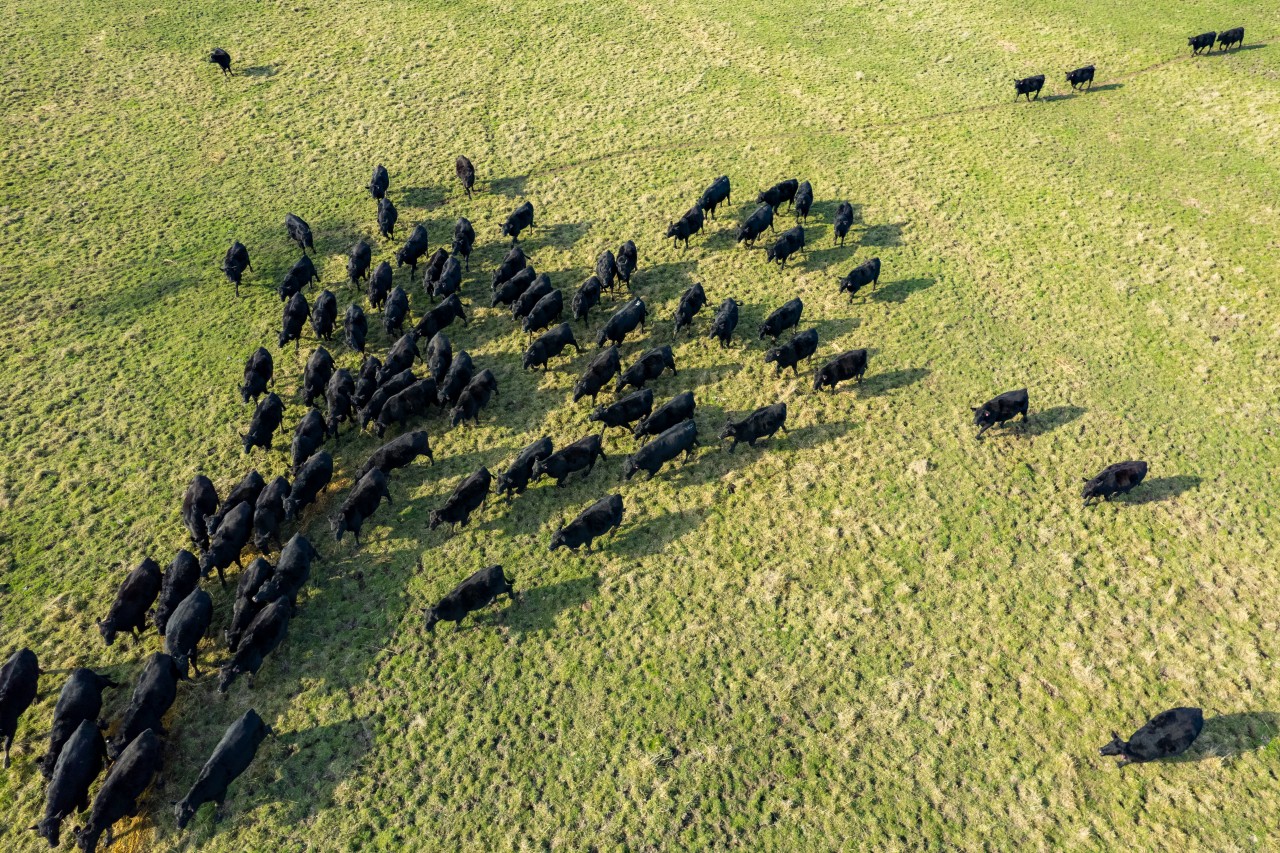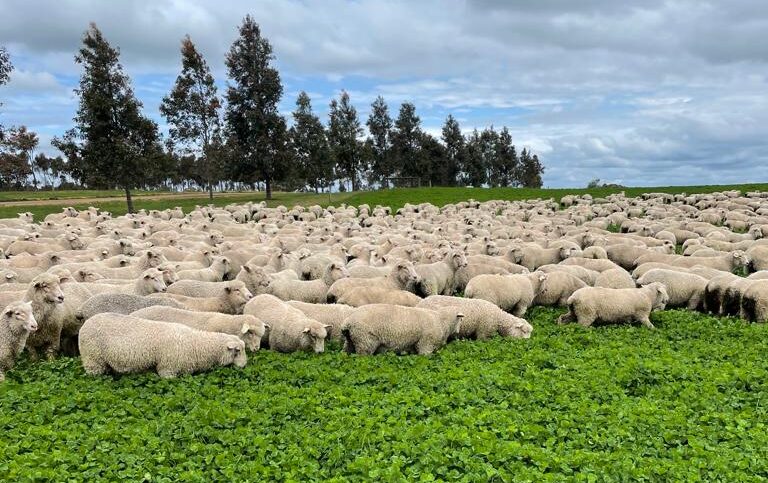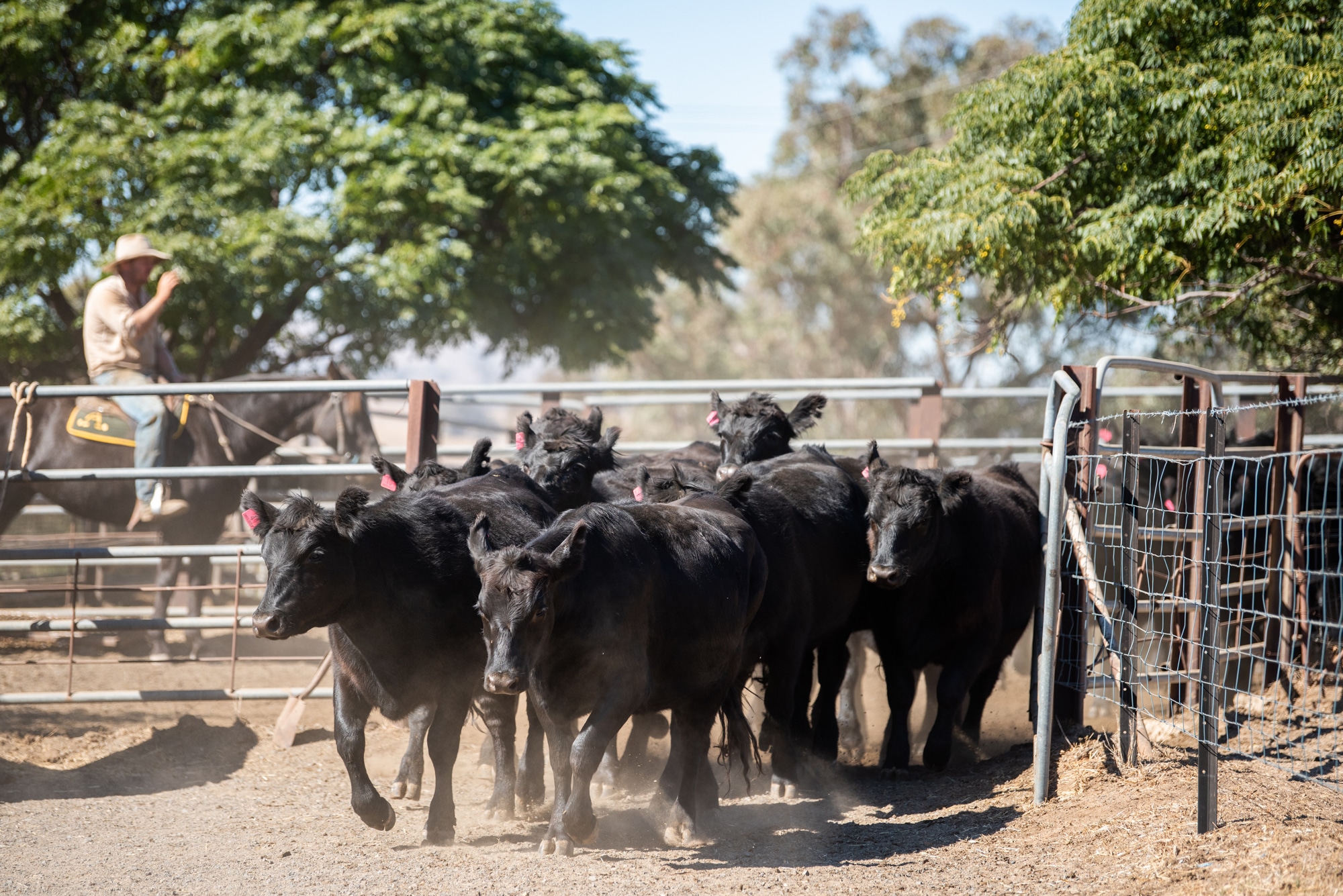Buying and selling livestock – a guide to managing risk when trading
In-brief
Livestock trading is a useful tool for boosting farm incomes when surplus feed is available. To confidently trade it is best to do the sums for a range of opportunities now, setting yourself some benchmark returns to cover the risks. That way you won’t miss opportunities for want of not being prepared.
Introduction
One of the hardest parts of trading in this environment is purchasing. Particularly when you think the market is too expensive and by holding back you are missing out on potential profits. However, making rushed decisions led by concern of missing out, can cause significant financial losses so preparation is key when aiming to access market opportunities.
This article outlines a ‘Trading Checklist’ which can help you test the risk that is involved with the trades you are contemplating. The budgeted profit ($/DSE) and particularly the return on investment will determine the economic risk involved with the trade. These will be dependent on the market and the season over which you are trading. You will also need to consider your exit strategy should your assumptions not pan out.
The risks
The two main risks with a trading strategy are the season and the price. It is worth-while thinking about how these risks will be managed, particularly if you are still trying to regain lost ground because of drought.
Seasonal risks can be managed by allowing for some supplementary feed in your budget, targeting higher purchase weights to minimise the weight required to meet the market, or developing a good exit strategy through offloading stock at key dates through the season.
There are two ways to manage the price risk of a trade. The first is to lock in a market for the livestock at a later date. Whilst this does take care of the price risk, it also introduces more seasonal risk, because if the season turns against you there are no options other than to deliver on the contract. This may significantly increase the cost of getting to market. The importance of this is amplified by how much you are accounting for what will grow in your feed budget against what is already on hand from a pasture perspective.
The second way is to make sure there is enough margin to take into account most of the likely movement that may be experienced in the price due to market and seasonal movements.
Managing price risk is about understanding the sensitivity of your trade and, where you can’t lock in forward price for the stock, making sure there is enough margin to begin with to allow for significant movements in the market. A return on investment (ROI) should be calculated when assessing trades whether capital is limiting or not. Your minimal ROI should give you a buffer to allow for realistic market movements. The more volatile or unprecedented the market is, the higher the minimal ROI should be.
In this current market a ROI of 20% should be adequate, however it is important to test the sensitivity of your trade against these market movements.
Trading Checklist
The best way to manage risk is to be prepared. The following check list runs through the key criteria to tick off before entering into a trade.
Big picture analysis
- What is my stocking rate deficit and therefore how many DSE’s do I require (identified through pasture budgeting)?
- What is my current cash flow position, and what capital outlay can I afford including additional working capital?
- If I am short on capital, how can I finance it and what will it cost?
Trade production analysis
- What type of trade fits with the upcoming season and target market?
- Weight gain – i.e putting weight on young cattle or lambs
- Value adding – i.e purchasing empty breeders to be joined and sold in calf/lamb
- If it is weight gain:
- How many kilograms can be put on over the period of the trade?
- What sale weights must you target to keep marketing options flexible?
- From the above two points, what is your target weight range for purchases?
- If it is value adding:
- What is the expected conception rates of the chosen breeders and what will be the empty stock be worth? What sale weights must you target to keep marketing options flexible?
- What is the target calving/lambing month and does this fit with typical grazing systems?
Trade financial analysis
- What is the gross margin per DSE?
- What is the return on investment?
- Does the return on investment cover the risks involved with the trade?
Exit strategy analysis
- What is my exit strategy if the market or seasons go against the trade scenario?
- Have I accounted for supplementary feeding in my budgets?
- Can I sell stock earlier into a different market?
- At what rate can the market fall before I breakeven on this trade
Case study example
A wet winter and above average spring growth has provided surplus pasture growth on James’ southern grazing property. It is mid-September when James does a pasture budget which shows a requirement for an additional 1000 DSE to provide pasture utilisation that will meet his March target of 2000kg dry matter across the farm.
James identifies a number of options to fill his stocking rate deficit. He has had experience with trading before and knows his expected weight gains in sheep and cattle over the proposed period. James wants to assess two trades, fattening steers and fattening lambs. James identifies there is 90 days of maximum weight gain left before weight gain subsides significantly, therefore the production will need to be accounted for in this time.
James runs his numbers on his proposed trades and ticks off the trading checklist. The assumptions and outcome of an analysis on purchasing steers are summarised in Table 1. The assumptions and outcome of an analysis on purchasing lambs are summarised in Table 2. In Table 3 James uses the information from his trade analysis to run through the checklist to identify any issues or constraints with his proposed trades.
Table 1. Proposed steer trade purchasing cattle at 315kg liveweight for $1,764 a head ($5.60 per kg liveweight, incl. purchase costs). At a weight gain of 135kg per head, the sale value is $2,250 ($5.00 per kilogram liveweight). This gives a gross margin of $304 per head, which is a return on investment of 17%.
| Steer Trade | |
|---|---|
| Purchase weight (kg/head) | 315 |
| Purchase Price ($/Hd) | $1,764 |
| Direct Cost ($/Hd) | $25 |
| Selling Cost (%) | 7% |
| Weight Gain (kg lwt/Hd) | 135 |
| Sale Weight (kg lwt/Hd) | 450 |
| Sale Price ($/kg lwt) | $5.00 |
| Sale Price ($/Hd) | $2,250 |
| DSE rating per head | 9 |
| Gross Margin ($/DSE) | $34 |
| Gross Margin ($/DSE) | $34 |
| Return on Investment | 17% |
Table 2: Proposed lamb trade purchasing lambs at 27.5kg liveweight for $130 a head ($11.08 per kg dwt, incl. purchase costs). At a weight gain of 22kg per head, the sale value is $184 ($8.00 per kilogram dwt). This gives a gross margin of $45 per head, which is a return on investment of 34%.
| Lamb Trade | |
|---|---|
| Purchase weight (kg lwt/head) | 27.5 |
| Purchase price ($/head) | $130 |
| Total costs ($/head) | $9.50 |
| Target sale weight (kg dwt/head) | 23 |
| Dressing % | 47% |
| Sale price ($/kg dwt) | $8.00 |
| Sale value ($/head) | $184 |
| Weight gain (kg lwt/head) | 22 |
| Expected growth rate (g lwt/head/day) | 242 |
| Gross margin ($/head) | $45 |
| DSE rating per head | 2.0 |
| Gross margin ($/DSE) | $23 |
| Return on Investment | 34% |
Table 3: Trading checklist – has James considered the risks involved with the trades he has proposed?
| Big picture analysis | Steer trade | Lamb trade |
|---|---|---|
| What is my stocking rate deficit and therefore how many DSE’s do I require (identified through pasture budgeting)? | Pasture budget confirms a stocking rate deficit of 1000 DSE to reach target of 2000kg dry matter in March. | Pasture budget confirms a stocking rate deficit of 1000 DSE to reach target of 2000kg dry matter in March. |
| Pasture budget confirms a stocking rate deficit of 1000 DSE to reach target of 2000kg dry matter in March. | What is my current cash flow position, and what capital outlay can I afford including additional working capital? | Requires a capital outlay of $196,000. Significantly higher capital required than lambs. Requires a capital outlay of $66,196. Significantly lower capital required than steers. |
| If I am short on capital, how can I finance it and what will it cost? Capital will be pushed in this scenario, but financing will not be required. Not short on capital | If I am short on capital, how can I finance it and what will it cost? Capital will be pushed in this scenario, but financing will not be required. Not short on capital | If I am short on capital, how can I finance it and what will it cost? Capital will be pushed in this scenario, but financing will not be required. Not short on capital |
| Trade production analysis | ||
| What type of trade fits with the upcoming season and target market? | ||
| Weight gain – i.e putting weight on young cattle or lambs | 90 days of maximum weight gain is left in the system. Beyond this point weight gain will drop off significantly. | 90 days of maximum weight gain is left in the system. Beyond this point weight gain will drop off significantly. |
| Value adding – i.e purchasing empty breeders to be joined and sold in calf/lamb | ||
| If it is weight gain: | ||
| How many kilograms can be put on over the period of the trade? | Steers are expected to grow at 1.5kg per head per day meaning a growth rate of 135kg per head can be expected. | Lambs are expected to grow at 250g per head per day meaning a growth rate of 22.5kg per head can be expected. |
| What sale weights must you target to keep marketing options flexible? | A 450kg/head target sale weight. A | +23kg/head dwt sale target. |
| From the above two points, what is your target weight range for purchases? | Target purchase weight is 315kg/head | Target purchase weight is 27.5kg lwt/head |
| What is the purchase price and target sale price? | Purchase: $5.60 lwt Sale: $5.00 lwt | Purchase: $10.65 dwt Sale: $8.00 dwt |
| If it is value adding: | ||
| What is the expected conception rates of the chosen breeders and what will be the empty stock be worth? | ||
| What is the target calving/lambing month and does this fit with typical grazing systems? | ||
| Trade financial analysis | ||
| What is the expected gross margin per annual average | DSE? $34/DSE | $23/DSE |
| What is the return on investment? | 17% | 34% |
| Exit strategy analysis | ||
| What is my exit strategy if the market or seasons go against the trade scenario? | ||
| Have I accounted for supplementary feeding in my budgets? | No supplementary feed has been accounted for | No supplementary feed has been accounted for |
| Can I sell stock earlier into a different market? | A minimal weight gain of 107/kg per head is required to for a 10% ROI and to still meet the feeder market. | Lamb growth rate must meet or exceed 180g/hd/day to reach a finished target market. |
| At what rate can the market fall before I breakeven on this trade | A 6% price fall to a sale value of $4.70 dwt will give a 10% ROI. | A 17% price fall to a sale value of $6.64 dwt will give a 10% ROI. |
The steer trade presents a better gross margin per DSE however there is significantly more risk involved. Only a 6% loss on expected sale price will reduce the return on investment to 10% which is just above breakeven on a gross margin basis. The lamb scenario can withstand a 17% decrease in sale price before being in a breakeven position.
Both trades are heavily influenced by weight gain, so it is important to ensure that these weight targets are realistic. Also making sure the exit strategies are well thought through will be imperative in James’ scenario as he has not accounted for any supplementary feed.
Weighing up his analysis and the trading checklist, James decides to purchase lambs understanding he may be forgoing potential income in comparison with the steer trade but can withstand greater market fluctuations.
Conclusion
When entering into a trade make sure you are being realistic about your market and production assumptions. Less margin in the system means less room for error so making sure you have covered off on all potential cases and sensitivities is important. If in doubt be prepared to take a step back and look at other options.
Livestock trading presents great opportunities for farmers to boost income when there’s surplus feed. It’s crucial, however, to understand the risks associated with trading. To ensure you’re making informed decisions, speak to one of our livestock agents.
Author
Aggregate Consulting is an agricultural consultancy business based in Wagga Wagga in southern NSW.







